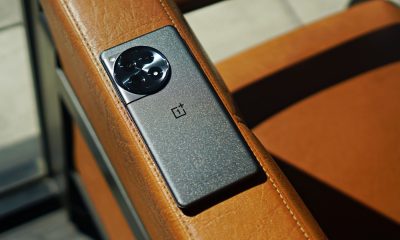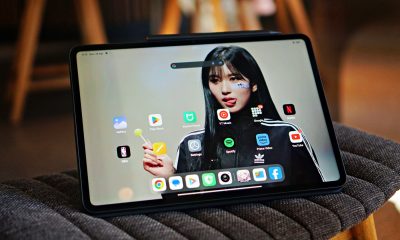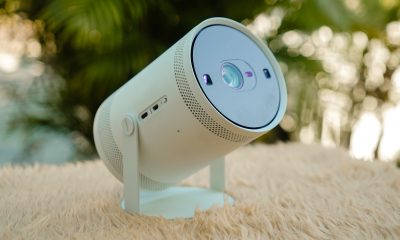Enterprise
realme’s strategy is to go beyond smartphones
But with smartphones still as the central hub

The rise of realme over the last two years has been nearly meteoric. After building a foundation in Southeast Asia, the brand has announced at IFA 2020 that they’re now ready to take on Europe. Their strategy is to go beyond smartphones but with that personal mobile device as the central hub for everything.
Sound familiar? What realme aims to do appear to be a mish-mash of what Huawei and Xiaomi are doing. Not bad examples to follow seeing as how Huawei sky-rocketed in popularity (US-China trade war notwithstanding), and how Xiaomi has built a cult following for offering smart home devices for less.
Disrupting the smartphone market
We’ve already talked about how realme has been a disruptor by offering flagship features for phones in the lower and upper midrange category. The features range from debuting the 64MP camera, adding a 90Hz refresh rate, and many more.
They have also had success with their budget offering — the realme C series. These budget phones are well-built and have enough oomph for what you may need a smartphone for.
The next frontier is 5G and naturally, realme is also partaking in that area with the realme V series and realme X series.
The realme V Series is mainly for solving low battery anxiety in the 5G era with flash charging and mega battery, enabling better 5G experience. The realme V5 was launched in China in August with 5000mAh mega battery and 30W Dart Charge. Launched in September, realme V3 is designed to bring 5G closer to more people by pricing at at the budget $150 segment.
Meanwhile, the realme X Series is positioned as a lighter and thinner 5G flagship with powerful performance. It will adopt cutting-edge technology and craftsmanship to bring industry-leading trendsetting design and bring a unique experience for the young. Recently, realme X7 and X7 Pro were launched as the 1st choice among 5G flagship with 120Hz AMOLED screen and 65W SuperDart charge.
1+4+N
realme has also started offering a bunch of AIOt products that can be linked to the still developing realme Link App. We’ve seen the some TWS buds and most recently the realme Watch. But it doesn’t stop there.
They’re taking a “1+4+N” strategy meaning they look to lure you into the ecosystem by offering products that first work with the smartphone and extending their reach from that.
- 1 Core: realme takes smartphone as the core of realme AIoT ecosystem to connect, manage and control all AIoT product with realme Link App.
- 4 Smart Hubs: realme makes Smart TV, Smart Speaker, Smart Watch and Smart Earphone as the top 4 smart hubs to help consumers manage and control more AIoT products together with smartphones.
- N AIoT products: The ‘N’ here represents realme’s commitment to bring a plethora of new AIOT and peripheral product, and trendsetting lifestyle products for our fans. realme aims to build a trendsetting community for the young.
realme is poised to launch over 50 AIoT products in 2020, and 100 in 2021, to make AIoT become a part of our lives in a more easy and affordable way.
In 2020 Q4, realme will enhance this AIoT ecosystem with its first 55” TV, wireless and TWS ANC earphone, medium and high-end smartphone, and smart camera and smart bulb.
A brand for the youth
realme also has its cross-hairs squarely focused on the youth. The idea is to bring this new digital home lifestyle closer to the youth. To do that, they need to make the products affordable but made with quality. For the most part, they’re on the right track.
At present, realme has over 45 million users in 61 markets worldwide. They’re top 5 in Singapore, top 4 in Australia, top 4 in India, and top 4 in SEA. As mentioned earlier, the next market of interest is Europe then Latin America.

For the longest time, Google kept Pixel and Android behind two different teams. While the Pixel team dealt with devices made by and for the brand, the Android team ships a product meant for brands outside of the company’s purview. However, the days of separation are at an end. Google is officially merging its Pixel and Android teams together.
In a shocking announcement, the company has confirmed that the teams handling hardware and software will fall under a single team headed by Rick Osterloh. Prior to the merge, Osterloh was the senior vice president of devices and service, which was Google’s hardware branch. He will now oversee both hardware and software.
Because of the new leadership change, Hiroshi Lockheimer, former head of Android, will now move on to other projects within Alphabet. Of note, the change is not harsh for Lockheimer. He and Osterloh had been contemplating on the merge for a while.
Now, why the change? As is the case with everything today, it’s all because of AI. Speaking to The Verge, Osterloh explains that the merge will help with “full-stack innovation.” With how technology is these days, it’s now impossible to develop AI without having a close eye on hardware, such as in Google’s AI developments for the Pixel camera. Merging the teams will help streamline development, especially when hardware is involved.
Despite the change, outside brands, like Qualcomm’s Cristiano Amon, remains confident of Android’s capabilities outside of Google. Just expect more AI coming out in the near future.

The ongoing trade war between the United States and China is putting a lot of companies out of business in one country. While all eyes are currently on America’s crusade against TikTok, China has launched a salvo of its own. The country has started banning AMD and Intel, starting with government devices.
Recently, as reported by the Financial Times, China has introduced a new rule that bans American chipsets and servers from government agencies. The new ban includes AMD, Intel, and Microsoft Windows.
In lieu of the now-banned brands, Chinese government agencies must use approved brands from a list of 18 Chinese manufacturers. Unsurprisingly, the list includes Huawei, another brand involved in the ongoing trade war. (Huawei is still banned on American soil.)
As with bans from America, China’s latest rules stem from a desire to implement national security. Both countries allege that using brands from the opposing side will open a potential avenue for transferring classified information.
Currently, the ban against the American chipsets are only affecting government devices. However, if it follows the same trajectory as Huawei and TikTok in the United States, a government-only ban might soon lead to an all-out ban on consumer devices. As TikTok is currently hanging in the balance, it’s unlikely that the trade wars will cool down anytime soon.

So far, Apple’s greatest enemy has been the European Union. Months and months of claiming that the company engages in anti-competitive practices, the region has successfully caused Apple to drastically change a lot of things about the iPhone including the Lightning cable. Now, a new challenger wants Apple to answer for its supposed grip on the industry: the United States government.
Today, the Department of Justice is officially suing Apple for supposedly monopolizing the smartphone industry and stifling competition. The lawsuit alleges that Apple’s lineup of products prevent users from trying out other brands. For example, Apple limits how well a third-party smartwatch works on an iPhone, pushing users to go for an Apple Watch instead.
The lawsuit also includes an important pain point in Apple’s fight in Europe. It says that the company makes it difficult for iPhone users to communicate with Android users (and vice versa). Late last year, the company already committed to supporting RCS as a messaging standard, finally easing communication between the two systems. Their adoption has yet to arrive, though.
Though not as stringent as Europe, the American government is no slouch when it comes to questioning its own companies for pursuing anti-competitive practices. In the past, it went through Google and Spotify to protect the interests of its citizens. The lawsuit against Apple is no different, gathering signatures from sixteen states.
For Apple’s part, the company aims to get the case dismissed, alleging the lawsuit’s unfair scope of just the American people when it targets the entire world.
SEE ALSO: Apple opens first Developer Center in Southeast Asia
-

 Reviews7 days ago
Reviews7 days agorealme 12 5G review: It was enchanting to meet you
-

 Buyer's Guide2 weeks ago
Buyer's Guide2 weeks ago2024 Samsung TV: Buyer’s Guide
-

 Reviews2 weeks ago
Reviews2 weeks agoJBL Soundgear Sense review: Make every run magical
-

 Reviews3 days ago
Reviews3 days agoOnePlus 12R review: Making sense of OnePlus’ latest flagship
-

 Reviews2 weeks ago
Reviews2 weeks agoChallengers review: A thrilling drama wrapped as a tennis anime
-

 News1 week ago
News1 week agoXiaomi Redmi A3 Philippine pricing, availability
-

 Smartphones2 days ago
Smartphones2 days agoHuawei Pura 70 Pro Unboxing and First Impressions
-

 Smartphones1 week ago
Smartphones1 week agoInfinix NOTE 40 Pro+ 5G: Philippine pricing, availability




























